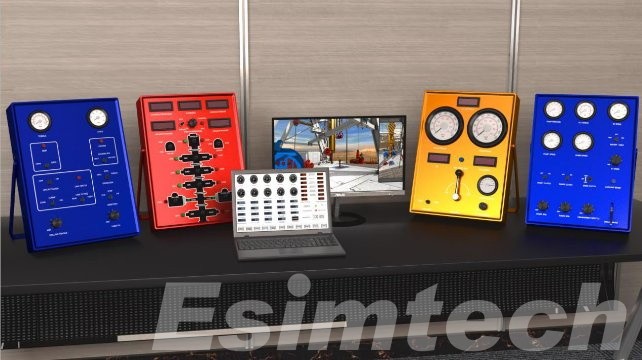In the dynamic landscape of the oil and gas sector, technological advancements have always been pivotal in driving efficiency and safety. One such innovation that has garnered significant attention is the integration of drilling simulators and well control simulators into training and operational protocols. These sophisticated tools, which leverage cutting-edge gaming technology, are revolutionizing how professionals prepare for the complexities of drilling operations.

Drilling simulators have come a long way from their rudimentary beginnings. Modern systems, such as the portable well control simulation system developed by Esimtech, are designed to offer realistic training experiences for a wide range of personnel, from new employees to experienced drilling supervisors. These simulators combine petroleum engineering, computer technology, and virtual reality to create immersive environments that closely mimic real-world drilling conditions. By utilizing mathematical models to simulate various parameters like pressure, torque, and drilling rate, these systems provide trainees with the opportunity to practice critical skills in a safe and controlled setting.
The applications of drilling and well control simulations extend beyond mere training exercises. In an industry where safety is paramount, these simulators are proving to be invaluable tools for enhancing worker preparedness and reducing operational risks. For instance, the ability to simulate high-risk scenarios, such as well blowouts or equipment failures, allows workers to develop essential decision-making skills without exposing them to actual dangers. This not only improves safety metrics but also enhances overall operational efficiency.
Moreover, the portability and flexibility of modern simulators make them highly adaptable to various training needs. Whether it's a basic introduction to drilling operations or advanced well control techniques, these systems can be customized to meet specific requirements. The inclusion of features like real-time data display, 3D animations, and interactive problem-solving scenarios ensures that trainees receive comprehensive and engaging instruction.
In the current era, where the oil and gas industry is facing unprecedented challenges due to fluctuating market conditions and increasing regulatory scrutiny, the role of technology in ensuring operational excellence cannot be overstated. Well control simulators are emerging as a key component of this technological arsenal. By providing realistic simulations of drilling operations, these tools help bridge the gap between theoretical knowledge and practical application, ultimately leading to a more competent and confident workforce.
As we look to the future, the continued evolution of drilling simulators and well control simulators holds great promise for the oil and gas industry. With advancements in virtual reality, artificial intelligence, and data analytics, these tools are poised to become even more sophisticated and effective. By embracing these innovations, the industry can not only enhance safety and efficiency but also foster a culture of continuous learning and improvement.
In conclusion, the integration of drilling simulators and well control simulators into the oil and gas sector represents a significant step forward in leveraging technology for the betterment of the industry. As we navigate the complexities of modern drilling operations, these tools will undoubtedly play a crucial role in shaping the future of this vital sector.